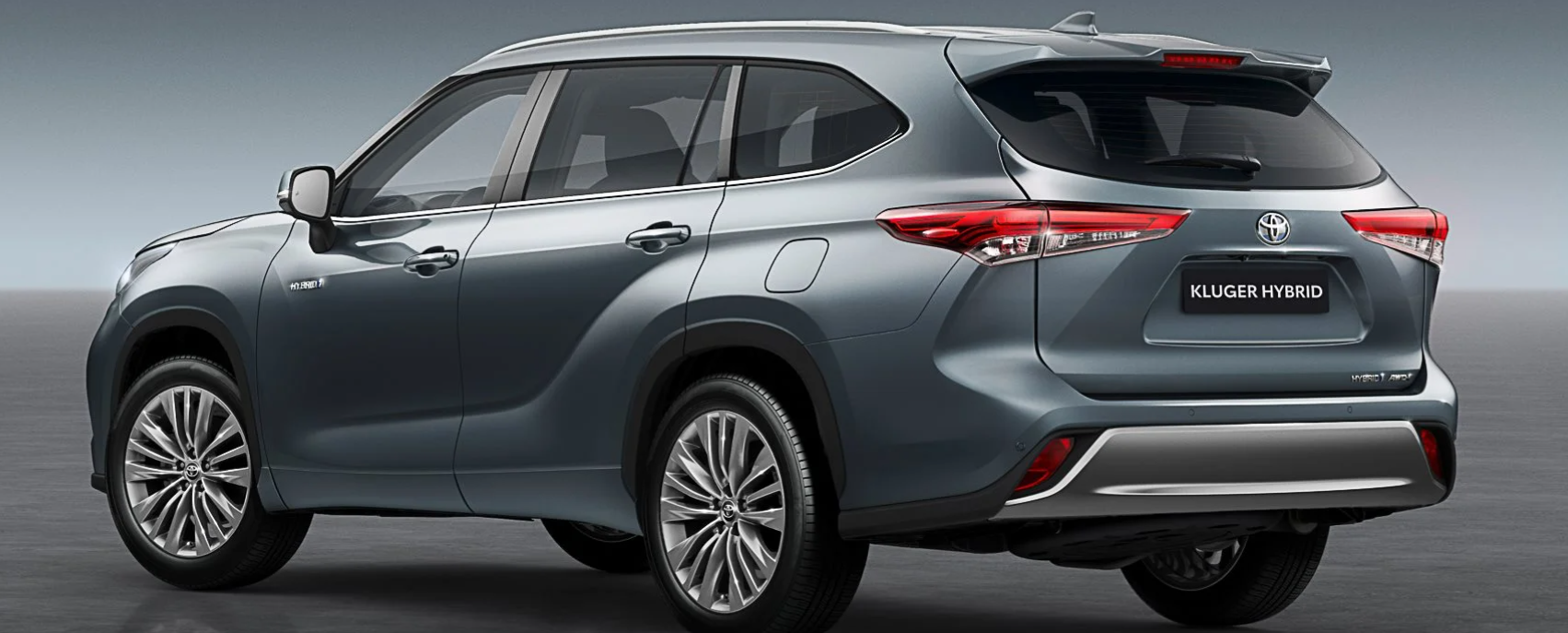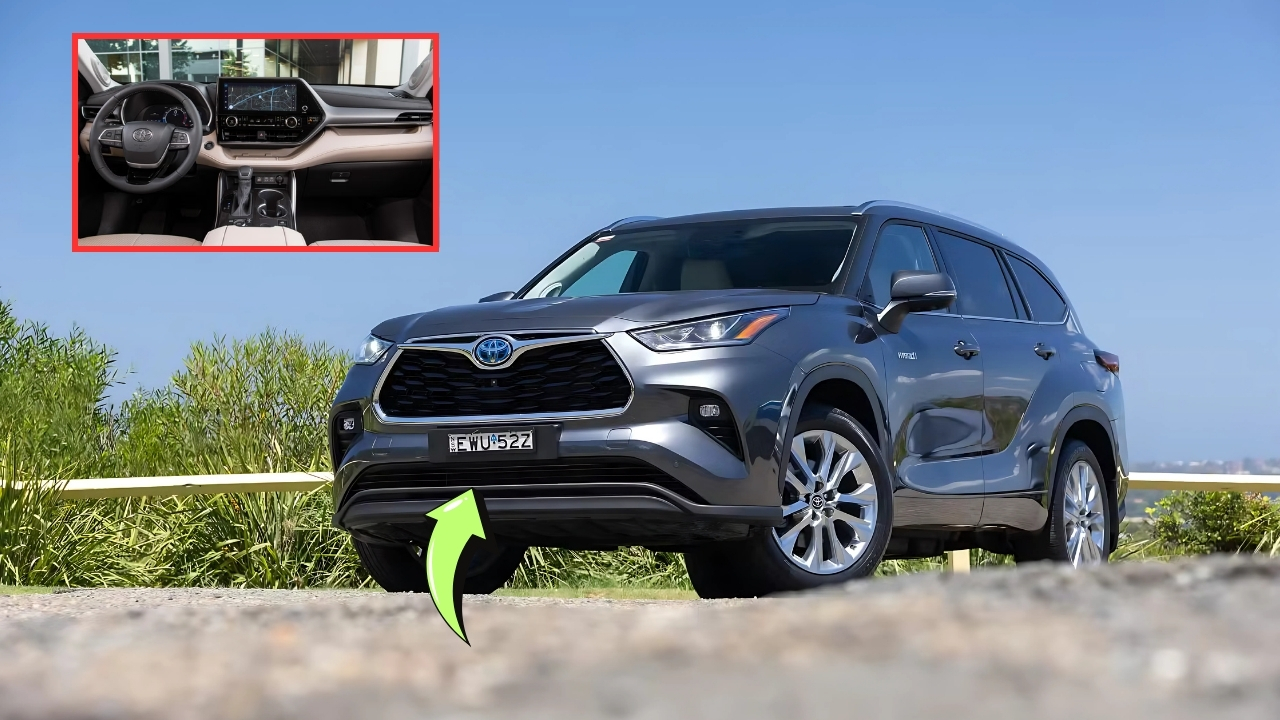2025 Toyota Kluger Hybrid SUV :The Australian automotive landscape continues to evolve, and one of the most significant developments affecting family SUV buyers has been the recent pricing adjustments across Toyota’s popular Kluger Hybrid lineup.
As we navigate through 2025, prospective buyers are facing a new reality where hybrid technology comes at an increasingly premium cost, reflecting broader market pressures that extend well beyond a single manufacturer’s pricing strategy.
Understanding these price movements requires us to examine not just the numbers themselves, but the complex web of factors that have led to this moment.
From supply chain challenges that have persisted since the global disruptions of recent years to the shifting regulatory environment surrounding vehicle emissions, the story of the Kluger’s pricing evolution tells us much about where the Australian automotive market is heading.
Understanding the New Pricing Structure
The most immediate impact on consumers comes from price increases of up to $1490 across the Kluger lineup, which took effect from June 1, 2025. This adjustment affects every variant in the range, though not equally, creating a new hierarchy of affordability that families must now navigate when considering their next vehicle purchase.
The entry-level seven-seat Kluger GX has seen its price rise from $60,290 to $62,410 before on-road costs, representing the maximum increase of $1490. For many families, this base model represents their entry point into the Toyota SUV ecosystem, making this increase particularly significant for budget-conscious buyers who have been counting on Toyota’s reputation for value retention.
The mid-tier GXL variant has experienced an identical $1490 increase, bringing its price to $71,930 before on-road costs. This positioning suggests Toyota is maintaining its traditional pricing gaps between variants while applying increases broadly across the range. Meanwhile, the flagship Grande model now commands $84,080 before on-road costs, reflecting a more modest $1220 increase.
These adjustments translate to percentage increases that vary across the lineup, with the entry-level GX seeing a 2.5 percent rise. However, the more significant story emerges when we consider the cumulative effect of pricing changes over recent years, as these latest adjustments build upon previous increases that have fundamentally altered the Kluger’s market positioning.
The Journey from Petrol to Hybrid-Only
To fully appreciate the current pricing situation, we must examine the dramatic transformation Toyota has implemented across its Kluger lineup. The transition from offering multiple powertrain options to an exclusively hybrid-only range represents one of the most significant strategic shifts in the model’s history, with profound implications for both pricing and consumer choice.
In 2024, Toyota eliminated the standard turbocharged 2.4-litre four-cylinder petrol engine, which had itself replaced the 3.5-litre V6 offered between 2021 and 2022. This progression shows Toyota’s deliberate movement away from traditional powertrains toward electrification, a strategy that aligns with global automotive trends but comes with immediate cost implications for consumers.
The company has now made the 2.5-litre petrol-hybrid powertrain standard across every model grade, with all Klugers featuring standard all-wheel drive. This standardization simplifies the buying process by eliminating powertrain choices, but it also means consumers can no longer opt for potentially more affordable alternatives.
When we examine the broader impact of this transition, the current lineup starts at almost $8000 more than it did 12 months ago, highlighting how the shift to hybrid-only powertrains has fundamentally altered the model’s affordability equation. This dramatic increase reflects not just the latest price adjustments, but the cumulative effect of moving to more complex and expensive hybrid technology as the sole option.
Equipment Updates and Value Proposition

Despite the price increases, Toyota has not left buyers entirely without additional value to justify the higher costs. The company has implemented several equipment updates that, while modest, demonstrate an effort to maintain competitive positioning within the increasingly crowded seven-seat SUV segment.
The equipment changes accompanying the price rise include a tyre pressure monitoring system across all grades, while the GX and GXL variants now receive the Grande’s 12.3-inch digital instrument cluster. These additions represent practical improvements that address modern driver expectations for safety technology and digital interfaces.
The inclusion of tyre pressure monitoring addresses an important safety consideration, particularly for families undertaking long-distance travel across Australia’s vast distances. Meanwhile, the upgraded digital instrument cluster brings lower-tier variants closer to premium segment expectations, potentially helping to justify the price positioning against increasingly sophisticated competition.
However, these incremental improvements must be weighed against the substantial price increases, leaving consumers to determine whether the enhanced equipment package provides sufficient value to offset the additional cost burden.
Market Context and Competitive Pressures
The Kluger’s pricing evolution cannot be understood in isolation from broader market dynamics that are reshaping the Australian automotive landscape. The three-row SUV lineup is imported to Australia from the United States, making it subject to currency fluctuations and international supply chain pressures that add complexity to pricing decisions.
Toyota Australia has acknowledged that these changes came into effect due to increased costs and inflationary pressures both domestically and overseas, reflecting the global nature of automotive manufacturing and the challenges of maintaining stable pricing in an environment of persistent inflation.
The competitive environment has also intensified significantly, with the Kluger facing direct competition from rivals including the Kia Sorento, Mazda CX-80, and Nissan Pathfinder. Each of these alternatives brings its own strengths and pricing strategies, creating a complex decision matrix for families comparing seven-seat SUV options.
Understanding this competitive context helps explain why Toyota’s pricing decisions carry such significance. As one of the market leaders in the segment, Kluger pricing adjustments often influence broader market dynamics and consumer expectations about what constitutes reasonable value in this category.
Sales Performance and Market Response
The impact of pricing pressures on consumer behavior becomes clear when examining recent sales data for the Kluger lineup. Australian Kluger sales to the end of April 2025 were down 24.8 percent to 2125 units, representing a significant decline that suggests consumers are responding to higher prices with reduced purchasing activity.
These sales figures stand in stark contrast to Toyota’s popular LandCruiser, Prado and RAV4 SUVs, which continue to maintain stronger market positions. This divergence suggests that while Toyota’s brand strength remains considerable, the Kluger’s specific pricing and positioning may have moved beyond the comfort zone of many traditional buyers.
The sales decline also occurs within a broader context of market softening across Australia. The Australian Vehicle Market continues to contract in 2025, with sales up to April dropping 3.3% following the negative trend of Q1. This broader weakness suggests that while Kluger-specific factors play a role, general economic pressures are also influencing consumer vehicle purchasing decisions.
The Broader Hybrid Market Trajectory
Despite challenges facing individual models like the Kluger, the broader hybrid vehicle market in Australia continues to show remarkable growth trajectories that provide important context for understanding Toyota’s strategic direction. Hybrids continue to rise up the sales charts, now accounting for more than 15 percent of all new vehicle deliveries in Australia throughout the first quarter of 2025.
This growth pattern validates Toyota’s decision to embrace hybrid-only powertrains for the Kluger, even if the immediate pricing implications create short-term sales challenges. Between January and March, 47,014 hybrid vehicles were delivered in Australia, making it the third-most popular fuel type, behind petrol and diesel.
Toyota’s dominance in this growing segment remains substantial, with the company delivering 28,204 hybrids in the first three months of 2025, accounting for almost 60 percent of the market. This leadership position suggests that while individual model pricing may create near-term challenges, Toyota’s broader hybrid strategy aligns with long-term market trends.
Economic Pressures and Inflation Impact
The pricing adjustments affecting the Kluger lineup reflect broader economic pressures that are influencing automotive pricing across Australia. Inflation held steady at 2.5% in January, but trimmed mean inflation rose slightly to 2.8%, indicating persistent inflationary pressures that continue to affect manufacturing and distribution costs.
These inflationary pressures create particular challenges for imported vehicles like the Kluger, where currency movements and international supply chain costs add additional complexity to pricing decisions. High unit labor costs, which have increased more than 5% year-over-year, continue to contribute to persistent inflation, affecting not just manufacturing but also the broader economic environment in which consumers make vehicle purchasing decisions.
The economic context also influences consumer behavior through employment and income trends. While the unemployment rate remained at 4.1% in February, economic uncertainty and cost-of-living pressures continue to influence how families prioritize major purchases like vehicles.
Future Outlook and Consumer Implications
Looking ahead, several factors will influence both Kluger pricing and the broader seven-seat SUV market segment. The transition toward greater electrification continues to accelerate, with electrified vehicles, including hybrids, plug-in hybrids (PHEVs), and full EVs predicted to reach 30% market share in 2025, up from 24% in 2024.
This trajectory suggests that Toyota’s strategic direction toward hybrid-only powertrains positions the Kluger appropriately for future market conditions, even if current pricing creates affordability challenges. The question becomes whether Toyota can manage the transition period successfully while maintaining competitive positioning against rivals who may offer more flexible powertrain options.
Consumer adaptation to higher vehicle prices appears to be occurring gradually, with families adjusting their expectations and potentially keeping vehicles longer to offset increased purchase costs. This behavioral shift may influence future pricing strategies as manufacturers balance the need for profitability against maintaining accessible pricing for core market segments.
The regulatory environment will also continue to influence pricing, with emissions standards and fuel efficiency requirements creating additional pressures for manufacturers to invest in advanced powertrains while managing the cost implications for consumers.
Frequently Asked Questions
What are the exact price increases for each 2025 Toyota Kluger Hybrid variant? The GX variant increased by $1490 to $62,410, the GXL increased by $1490 to $71,930, and the Grande increased by $1220 to $84,080, all prices before on-road costs.
Why has Toyota made the Kluger hybrid-only in 2025? Toyota eliminated petrol-only engines to focus on hybrid technology, aligning with emissions regulations and market trends toward electrification while providing improved fuel efficiency and reduced environmental impact.
How do these price increases compare to competitor seven-seat SUVs? The Kluger now competes directly with models like the Kia Sorento, Mazda CX-80, and Nissan Pathfinder, with pricing positioning it in the premium segment of the seven-seat SUV market, though specific competitive pricing varies by variant and equipment levels.

